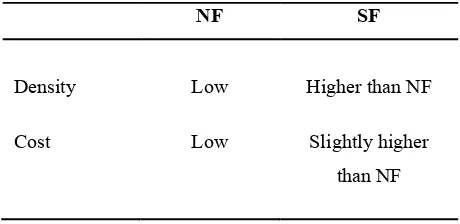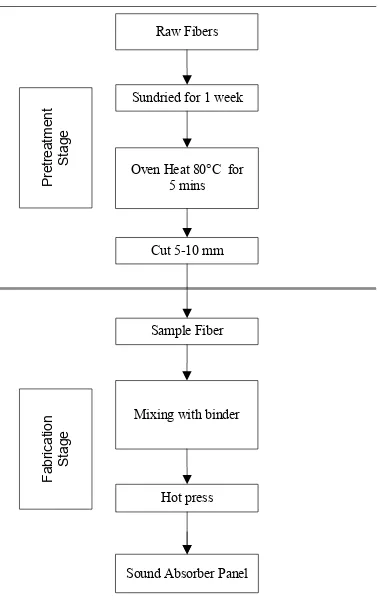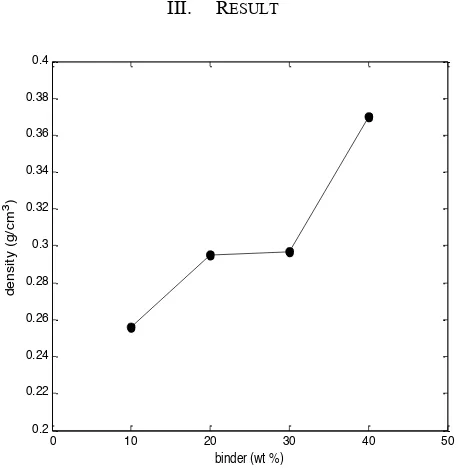THE EFFECT OF BINDER ON THE ACOUSTICAL PERFORMANCE OF
THE PADDY STRAW ‘GREEN’ SOUND ABSORBER
Yasseer Abdullah
*, Azma Putra, Hady Efendy, W.M. Farid and M.R. Ayob
Faculty of Mechanical Engineering, Universiti Teknikal Malaysia Melaka, Malaysia
*Email:[email protected]
Abstract
Sound absorbing material are widely use in application. It was started from asbestos-based material and now generally fabricated from synthetic materials. These non-biodegradable materials do not only cause pollution to the environment, but also contribute
significantly in increasing the CO2 causing the effect of global warming. Therefore researchers have now driven their attentions to
find sustainable and eco-friendly materials to be an alternative sound absorber. This paper discusses the use of natural fibers from dried paddy straw as fibrous acoustic material. Since these are common natural waste materials found across South East Asia, the usage will also minimize the production cost. Panels of sound absorbers from paddy straw are fabricated using hot press and their acoustic properties are investigated through experiment. The effect of the binder on the acoustic performance of the panel is investigated. In average, good sound absorption coefficient is found particularly above 2 kHz.
Keywords—Global warming; non-biodegradable; sustainable.
I. INTRODUCTION
Porous materials as sound absorbers are widely uses in building industries. Generally, they are made from synthetic-based fibers (SF) such as glass wool and asbestos. Building wall and ceiling are some examples where the sound absorbers are applied. It requires about more than 60% spaces of the whole building. However, when it comes to disposal, problems arise since these materials are non-biodegradable and also hazardous while handling. The effect of these synthetics in their fabrication on the increasing of CO2 has also been discussed [1]. Therefore existing materials need to be replaced with alternative eco-friendly materials such as natural fibers (NF).
Due to several beneficial factors using NF as shown in Table 1, several works have been done to investigate natural fibers as sound absorbers. These include kenaf fibers [2], Arenga pinnata fibers [3], tea leaf fibers [4], coir fibers [5-7] and reed [8]. The measured absorption coefficient shows good sound absorption coefficient particularly at mid to high frequencies.
This paper investigates the effect of binder in determines the optimum acoustic performance. This fiber can be found abundantly as agricultural waste in Malaysia particularly and South East Asia in general.
Table 1. Comparison between NF and SF [9].
NF SF
Density Low Higher than NF
Cost Low Slightly higher
Renewability Yes No
Recyclability Yes No
Raw Fibers
Figure 1. Flow chart of pre-treatment and fabrication processes.
Figure 2. Sample of paddy straw
Figure 3. Constructed sound absorber panel
B. Composition of binder
Binder and fiber were mixed with composition shown in Table 2 showing the weight ratio, panel weight and panel density used in order to investigate an optimum acoustic performance of the panel. The binder used in this experiment is a polyester resin. The thickness of samples is 12 mm. Here the weight of the paddy straw was retained while the amount of the binder was changed with the weight ratio between them was noted in Table 2.
Table 2. Binder ratio
C. Absorption Coefficient Testing
The test was performed using an impedance tube by applying two-microphone transfer function method according to ISO 10534-2:2001 international standard [10] and User’s manual [11]. The sample was placed at the end of the impedance tube and backed by a rigid surface. The instrument setup was shown in Fig. 4.
(a) diagram of the measurement setup
III. RESULT
Figure 5. Density of samples
Fig. 5 shows the density of each sample with different binder composition. At 20 - 30% binder, there is not much difference of density if compared to 10 - 20% and 30 – 40% binder. This is due to the heat given while hot-press was applied causing lignin inside fibers releasing leftover moisture which makes fibers lighter.
Figure 6. Absorption coefficient of samples
Fig. 6 shows that absorption coefficient increased from
From Fig. 6, it is interesting to note that the composition
which effectively enhances the absorption of sound energy.
Figure 7. Comparison between paddy straw and commercial glass wool
Fig. 7 showing the comparison of absorption coefficient between paddy sample with commercial glass wool. Even though from overall frequencies the paddy still lacking, but it is still comparable to glass wool.
IV. CONCLUSION
Acoustic performance of the natural paddy straw has been investigated. It is found that the binder composition affects the acoustical performance of the sound absorber. Optimum acoustic performance was obtained when the composition of binder are 30% of the total weight of the fibers. Details of the microscopic pores inside the samples are on interest to support this finding.
ACKNOWLEDGMENT
The authors would like to acknowledge the Universiti Teknikal Malaysia Melaka (UTeM) for supporting this work under Short Term Research Grant Scheme; PJP/2010/FKM(23B) S737.
REFERENCES
[1] F.Asdrubali, “Survey on the Acoustical Properties of New Sustainable Materials for Noise Control”.Euronoise 2006. [2] F. D’Alessandro and G. Pispola, “Sound Absorption Properties
of Sustainable Fibrous Material in an Enhanced Reverberation Room” The 2005 Congress and Exposition on Noise Control Engineering.
[3] L. Ismail, M.I. Ghazali, S. Mahzan and A.M.A. Zaidi, “Sound Absorption of ArengaPinnata Natural Fiber” World Academy of Science, Engineering and Technology, Vol. 67, 2010, pp. 1285-1290.
[4] S. Ersoy and H. Ku¨cu¨k. “Investigation of industrial tea-leaf-fibre waste material for its sound absorption properties”
0 10 20 30 40 50
500 1000 1500 2000 2500 3000 3500 4000 4500 5000
0
Fiber,” American Journal of Applied Sciences, vol. 7, 2010, pp. 1285-1290.
[6] M.J.M. Nor, M. Ayub, R. Zulkifli, N. Amin and M. H Fouladi, “Effect of Different Factors on the Acoustic Absorption of Coir Fiber” Journal of Applied Sciences, vol 10, 2010, pp. 2887-2892.
[7] M.H. Fouladi, M.J.M. Nor and M. Ayub and Z.A. Leman, “Utilization of coir fiber in multilayer acoustic absorption panel,” Applied Acoustic, vol 71, 2010, pp. 241-249.
[8] D.J. Oldham, C.A. Egan and R.D. Cookson, “Sustainable acoustic absorbers from the biomass” AppliedAcoustics, vol. 72, 2011, pp. 350-363.
[9] P. Wambua, J. Ivens and I. Verpoest “Natural fibres: can they replace glass in fibre reinforced plastics?” Composites Science and Technology, vol. 63, 2003, pp. 1259-1264.
[10] BS EN ISO 10534-2:2001. Acoustic-Determination of sound absorption coefficient and impedance in impedances tubes – Part 2: Transfer function method; 2001


